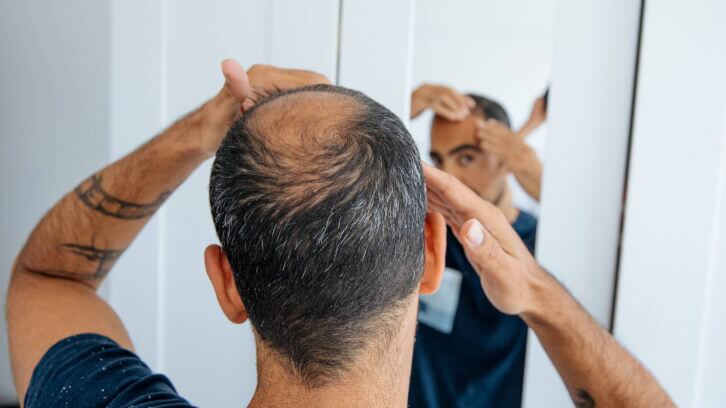“This work has demonstrated the effective delivery of caffeine from a novel shampoo composition which also effectively delivers the second anti-oxidant piroctone olamine,” wrote researchers in the journal Cosmetics. “We would expect that such a product will be especially beneficial to help solve the near-universal human problem of hair loss with age.”
Researchers from Charité—Universitätsmedizin Berlin, Philipps University Marburg, The Procter & Gamble Company, and the Freie Universität Berlin tested three shampoo formulations on calf hairs. A total of nine men were recruited for the study between 18 and 60 years old, with a Fitzpatrick skin type between I and III. People with tattoos on their calves were excluded.
The shampoo formulations tested also included other beneficial ingredients for skin and hair, including a secondary antioxidant, piroctone olamine, in one shampoo. Antioxidants such as caffeine and piroctone olamine can help reduce oxidative stress, which is critical for hair loss, the authors write. “It has been shown that oxidative stress occurring on the scalp is transmitted to the pre-emergent hair fiber leading to impaired structure and function of that fiber.”
Three different shampoos were tested: a control, one conventional shampoo (C) with caffeine added and one shampoo with new formulation technology, caffeine and piroctone olamine (K). For formulation K, the researchers utilized novel formulation technology, including decreased micellar stability. Previous research has shown this technology effectively delivers the antioxidant piroctone olamine and reduces scalp oxidative stress, leading to improved hair retention.
Results
The total percentage of caffeine that was absorbed into the skin was 9.6% for formulation C and 10% for formulation K. For the percent of that which penetrated the hair follicles, formulation C had .78% penetration and formulation K had .88% penetration. The intrafollicular proportion of the total amount recovered was 5% for this study. While formulation C was a conventional brand with caffeine added and formulation K utilized new formulation technology, both had roughly the same penetration rate for caffeine into the hair follicles.
In regard to the other beneficial ingredients used, the authors write, “niacinamide is known for its anti-inflammatory and barrier-stabilizing effects and hydrolyzed wheat protein has conditioning effects on the skin and hair based on ionic interactions. The further contained panthenol also bears hair- and skin-conditioning functions. Tocopherol is well-known for its antioxidative effects in skin, while glycerin is used as a humectant”.
The researchers do note that calf hair does differ from scalp hair in some aspects, which may influence caffeine absorption. “Furthermore, hair follicle density on the scalp is much higher compared to the calf, and hair follicle size is comparable,” the authors write. “Thus, the proportion could be enhanced for the hair follicle penetrated amount at the scalp.”
Source: Cosmetics
2023, 10(4), 104; doi: 10.3390/cosmetics10040104
“Follicular Delivery of Caffeine from a Shampoo for Hair Retention”
Authors: L. Busch, et al.

